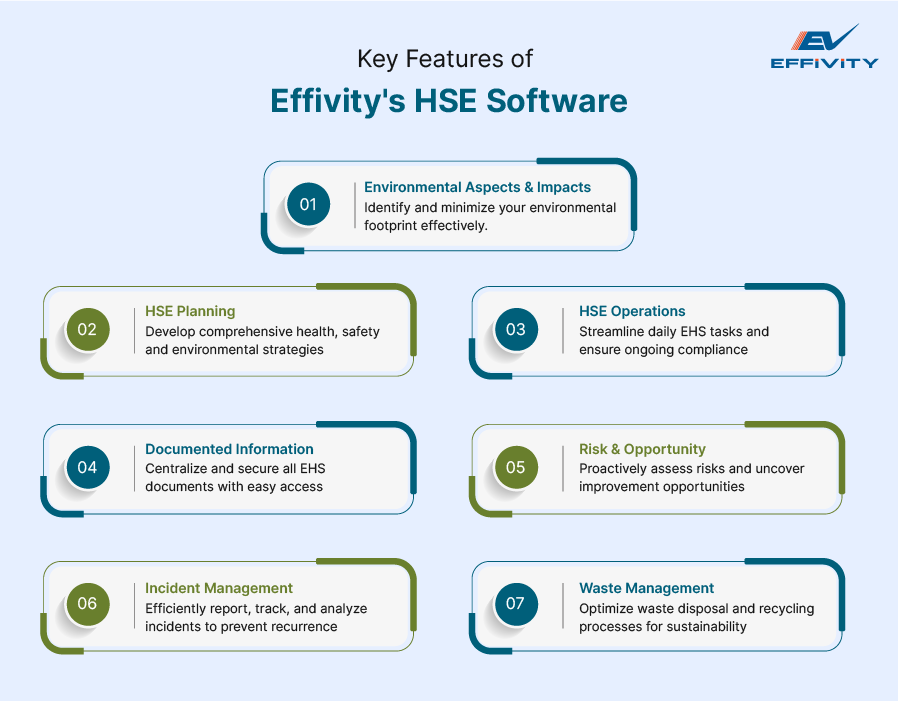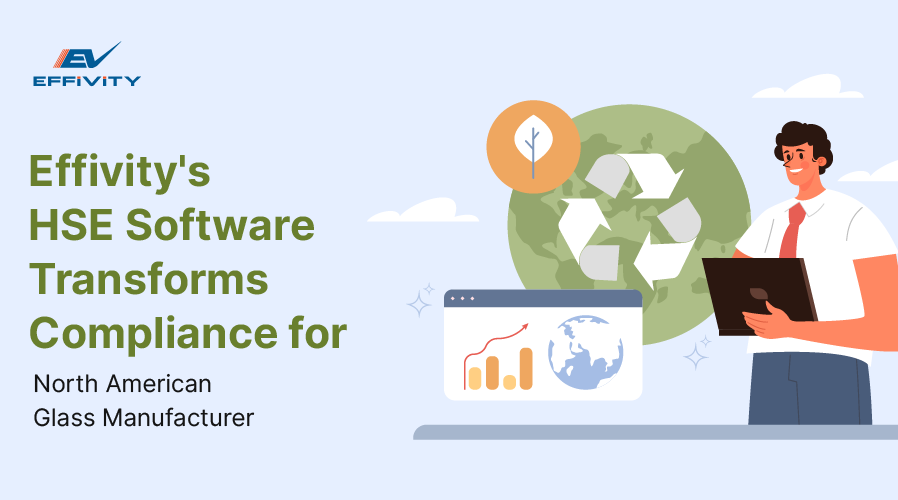The Environment, Health, and Safety domain is a vast one and keeping up with the ever-changing regulations that rule EHS systems is a constant struggle most organizations face regardless of which industry they operate in.
Manual compliance management takes time and eats up valuable resources, which takes your time away from core business processes. The lack of automation in compliance management also reduces the organization's ability to track incidents. As a result, you get a system prone to risks and accidents, endangering not just the organization's HSE standing but also the employees.
The North American glass manufacturing organization was facing similar challenges and was overwhelmed by the complex regulations and time-consuming processes. Effivity offered the Environmental management system software and helped the organization achieve compliance in environment, health and safety management.
About the Organization
The North American glass manufacturer is a leading producer of high-quality glass products. The organization meets glass requirements across various industries and is committed to excellence in all domains. The company prioritizes health, safety, and environmental sustainability in all its operations.
Challenges Faced by the North American Glass Manufacturer
- Navigating a complex set of EHS regulations was overwhelming for the manufacturer.
- Managing EHS compliance manually was inefficient and prone to errors and there was a need for a comprehensive health and safety software for glass manufacturing.
- The reliance on manual processes elevated the risk of workplace incidents and environmental accidents.
- Tracking and storing vast amounts of EHS information was challenging and time-consuming.
- Identifying the root causes of safety concerns was difficult without automated tools.
- Generating comprehensive EHS reports manually delayed decision-making and responses.
- Lack of real-time visibility hindered strategic health and safety decision-making.
Effivity's Solutions
To tackle their EHS compliance challenges, the North American glass manufacturer turned to Effivity's comprehensive HSE software. Effivity provided a suite of integrated modules tailored to their specific need to help them manage environmental, health, and safety responsibilities.
Key Features Offered

1. Environmental Aspects and Impacts
Effivity's Environmental Aspects and Impacts module allowed the manufacturer to systematically identify and evaluate the environmental factors associated with their operations. The company could better understand their environmental footprint and implement strategies to minimize negative impacts.
This ensured compliance with environmental regulations and promoted sustainable practices within the organization.
2. HSE Planning
With the HSE Planning module, the manufacturer was able to develop comprehensive health, safety, and environmental plans that aligned with their business objectives. Effivity facilitated the creation of actionable plans, setting clear goals and milestones to enhance overall EHS performance.
This structured planning process helped the organization stay organized, prioritize initiatives, and ensure that all EHS activities were strategically aligned with their long-term vision.
3. HSE Operations
Effivity's HSE Operations module streamlined daily EHS activities, making it easier to manage and monitor ongoing operations. The module provided tools for scheduling inspections, tracking maintenance activities, and ensuring that all operational procedures adhered to EHS standards.
The manufacturer reduced manual effort, minimized the risk of oversight, and maintained a consistent approach to managing their operations.
4. Documented Information
The Documented Information module offered a centralized repository for all EHS-related documents, ensuring easy access and secure storage. This feature eliminated the chaos of scattered paperwork, allowing employees to quickly find and reference necessary documents.
5. Risk and Opportunity
Effivity's Risk and Opportunity module empowered the manufacturer to proactively identify and assess potential risks and opportunities within their EHS framework. By conducting thorough risk assessments and implementing mitigation strategies, the company could prevent incidents before they occur.
6. Incident Management
The Incident Management module provided a robust system for reporting, tracking, and analyzing incidents. Whether it was a minor safety violation or a significant environmental spill, Effivity ensured that every incident was documented and addressed promptly.
7. Waste Management
Effivity's Waste Management module helped the manufacturer efficiently handle waste disposal and recycling processes. By tracking waste generation, categorizing different types of waste, and managing disposal methods, the company could ensure that all waste was handled in accordance with environmental regulations.
Final thoughts
The North American manufacturer used Effivity's EHS software for North America to meet the compliance demands of the global market. This way the organization was able to enhance its manufacturing process while also ensuring that these processes are environment friendly and that the employees were safe.
You can also achieve similar success with Effivity's HSE Software. Effivity is a leading compliance software solution provider offering customizable and easy-to-use compliance platforms that meet your business needs. Visit the Effivity website to learn more and get in touch with our team for a free consultation call!
Frequently Asked Questions
1. What is the difference between EHS and ESG software?
The main difference between EHS and ESG is the focus area. EHS software helps you manage Environmental, Health, and Safety compliance within your organization. It streamlines tasks like incident reporting, risk assessments, and regulatory compliance.
On the other hand, ESG software addresses Environmental, Social, and Governance factors on a broader scale. It enables you to track and report on your company's sustainability initiatives, social responsibilities, and ethical practices that matter to investors and stakeholders.
2. Who needs EHS software?
If your organization deals with environmental regulations, workplace safety, or health compliance, then EHS software can be incredibly beneficial for you. Companies across various industries like manufacturing, construction, energy, and chemicals use EHS software to streamline compliance tasks, manage risks, and ensure a safe working environment.
Even if you're a smaller business, if you're aiming to reduce accidents, improve your safety culture, and stay compliant with regulations, EHS software can make a huge difference.
3. Is EHS the same as HSE?
While EHS (Environment, Health, and Safety) and HSE (Health, Safety, and Environment) cover the same core areas, they are often used differently depending on the region. EHS is more commonly used in Australia, New Zealand, Canada, and the United States, whereas HSE is prevalent in Europe and Japan.
Despite these regional preferences, many companies and organizations use the acronyms interchangeably.



























